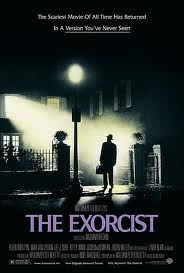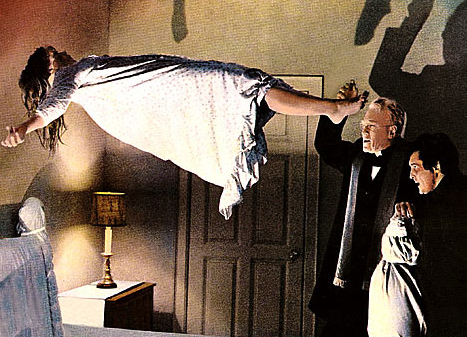 The Last Exorcism came out this past weekend, and facing zero competition, made a lot of money. The movie’s scary. I mean, go watch it, it’s scary, no doubt. It was produced by Eli Roth, and the man knows what he’s doing. He’s got the vocabulary of scary movies down pat. In fact, for all the crap he got about ushering in what we all delighted in calling torture porn, Hostel made it clear that Roth understands that horror stems from patient build-up and character moments. All great horror exists in what we don’t see as much as what we see, in that creeping feeling and in your imagination.
The Last Exorcism came out this past weekend, and facing zero competition, made a lot of money. The movie’s scary. I mean, go watch it, it’s scary, no doubt. It was produced by Eli Roth, and the man knows what he’s doing. He’s got the vocabulary of scary movies down pat. In fact, for all the crap he got about ushering in what we all delighted in calling torture porn, Hostel made it clear that Roth understands that horror stems from patient build-up and character moments. All great horror exists in what we don’t see as much as what we see, in that creeping feeling and in your imagination.
That’s the push pull of scary movies. Ground the world through solid character and real emotional situations. Generate expectations as to what might be lurking around every corner. And then, when you least expect it, you show something scary. In the best cases, the scary thing flows out of themes and emotional extremes that have been built up from the word go. That’s what great genre fiction does: turn emotional dynamics into metaphors.
Or at least that’s what goes on at the heart of this week’s case in point: 1973’s The Exorcist.
Some topics demand a certain theme, and exorcism movies tend to be about a crisis of faith. The tagline for The Last Exorcism is “If you believe in God, you must believe in the Devil.” For Father Damien Karras in The Exorcist, that notion’s flipped. Karras is a psychiatrist and priest whose faith falters while dealing with his mother’s terminal illness. He has lost faith in God, in himself, and in his life. It is only when he’s confronted with a girl possessed by the Devil that he begins to find he must admit God back into his life. It’s a terrible paradox that leads Karras to a terrible decision.
 William Peter Blatty wanted someone to bring a kind of grounded energy to The Exorcist and so he brought in William Friedkin, fresh off The French Connection, to direct this tidy little movie about faith. Bleaty wrote the book on which the movie was based, so he should know a thing or two about tone. Friedkin’s a legendary madman. On set he would smack actors upside the head and randomly shoot guns off into the air just to get the right take. He also built the bedroom set inside of a freezer to make the actor’s breath visible and, presumably, to make them even more uncomfortable.
William Peter Blatty wanted someone to bring a kind of grounded energy to The Exorcist and so he brought in William Friedkin, fresh off The French Connection, to direct this tidy little movie about faith. Bleaty wrote the book on which the movie was based, so he should know a thing or two about tone. Friedkin’s a legendary madman. On set he would smack actors upside the head and randomly shoot guns off into the air just to get the right take. He also built the bedroom set inside of a freezer to make the actor’s breath visible and, presumably, to make them even more uncomfortable.
A lot has been written about the metaphors in The Exorcist with regards to puberty, mother/daughter relationships, and there’s no denying that’s there. But I think for a movie coming out of the early 1970s, during the great ramp up to America’s loss of faith, when evil appeared everywhere, including the white house, it’s the notion that only this darkness pouring out of a little girl could offer faith to an intellectual that sends thematic shivers up people’s spines. At least when it was released in 1973.
However you cut it, I dare you to watch the movie alone in the dark.
Next week: are there still conspiracies in the world?


